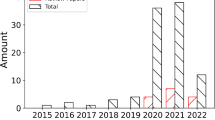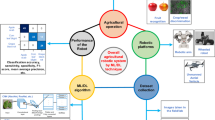Abstract
The world’s main source of food supply in agriculture, and due to the increase in population growth, the requirement for food supply is increasing day by day. Rice is the main food crop in many countries, and rice leaf infections are a common hazard to rice yield. So the early detection of rice leaf infection is crucial for rice crop growth and ensuring sufficient supply for a fast-growing population. Conventional manual identification of rice diseases is time-consuming, ineffective, and costly. To overcome this challenge, we can take images of the affected area of the plants and test them with a pre-trained model to identify and classify the rice diseases. Convolutional Neural Networks (CNN) in deep learning extracts the features from the images and diagnoses the diseases efficiently, which addresses the above issues. The main objective of this study is to minimize the loss and the processing time to predict rice diseases. Optimizers play a crucial role in reducing the loss in the neural network. We proposed an Improved Activation and Optimizer Function (IAOF) in the CNN model to minimize the loss and improve the prediction performance and classification accuracy. The output performance of the proposed IAOF-CNN surpasses the other existing methods and has been verified as the best implementation.











Similar content being viewed by others
Data availability
Data sharing not applicable to this article.
Abbreviations
- CNN:
-
Convolution neural network
- RBF:
-
Radial basis function
- SVR:
-
Support vector regression
- SVM:
-
Support vector machine
- ANN:
-
Artificial neural network
- PCA:
-
Principal component analysis
- RF:
-
Random forest
- SAN:
-
Self-attention network
- NN:
-
Neural network
- KNN:
-
K-Nearest neighbor
- IAOF:
-
Improved activation and optimizer function
- IOF:
-
Improved optimization function
References
Amara J, Bouaziz B, Algergawy A (2017) A deep learning based approach for banana leaf diseases classification. Datenbanksysteme Business, Technologie and web (BTW2017) workshopband 1(1):79–88
Anthonys G, Wickramarachchi N (2009) An image recognition system for crop disease identification of paddy fields in srilanka. In: 2009 International Conference on Industrial and Information Systems (ICIIS), pages 403–407. IEEE
Bandara D, Mayurathan B (2021) Detection and classification of rice plant diseases using image processing techniques. International conference on advanced research in computing (ICARC2021), 1–5
Bhimavarapu U (2022) IRF-LSTM:enhanced regularization function in LSTM to predict the rainfall. Neural Comput & Applic 34(22):20165–20177
Brahimi M, Boukhalfa K, Moussaoui A (2017) Deep learning for tomato diseases: classification and symptoms visualization. Appl Artif Intell 31:299–315
Chen H, Wu W, Liu H-B (2016) Assessing the relative importance of climate variables to rice yield variation using support vector machines. Theor Appl Climatol 126(1):105–111
Chen J, Chen J, Zhang D, Sun Y, Nanehkaran YA (2020) Using deep transfer learning for image based plant disease identification. Comput Electron Agric 173:105393
Chen K, Franko K, Sang, R (2021) Structured model pruning of convolutional networks on tensor processing units. arXiv 1(1):1–6
Ferentinos KP (2018) Deep learning models for plant disease detection and diagnosis. Comput Electron Agric 145:311–318
Fuentes A, Yoon S, Kim SC, Park DS (2017) A robust deep learning based detector for real time tomato plant disease and pests recognition. Sensors 17(9):2022
Gandhi N, Armstrong LJ (2016) Rice crop yield forecasting of tropical wet and dry climatic zone of India using data mining techniques. In: 2016 IEEE International Conference on Advances in Computer Applications (ICACA), pages 357–363. IEEE
Geetharamani G, Pandian A (2019) Identification of palnt leaf diseases using a nine layer deep convolutional neural network. Comput Electr Eng 76:323–338
Hosseinpourtehrani M, Ghahraman B et al (2011) Optimal reservoir operation for irrigation of multiple crops using fuzzy logic. Asian J Appl Sci 4(5):493–513
Jenifer S, Parasuraman S, Kadirvelu A (2016) Contrast enhancement and brightness preserving of digital mammograms using fuzzy clipped contrast-limited adaptive histogram equalization algorithm. Appl Soft Comput 42:167–177
Kumar P (2011) Crop yield forecasting by adaptive neuro fuzzy inference system. Math Theory Model 1(3):1–7
Li Y, Nie J, Chao X (2020) Do we really need deep CNN for plant diseases identification. Comput Electon Agric 178:105803
Liang Q, Xiang S, HuY CG, Zhang D, Sun W (2019) PD2SE-Net: computer assisted plant disease diagnosis and severity estimation network. Comput Electon Agric 157:518–529
Lu Y, Yi S, Zeng N, Liu Y, Zhang Y (2017) Identification of rice diseases uisng deep convolutional neural netowrks. Neurocomputing 267:378–384
Mazloumzadeh SM, Shamsi M, Nezamabadi-Pour H (2010) Fuzzy logic to classify date palm trees based on some physical properties related to precision agriculture. Precis Agric 11(3):258–273
Mohan KJ, Balasubramanian M, Palanivel S (2016) Detection and recognition of diseases from paddy plant leaf images. Int J Comput Appl 144(12):34–41
Mohanty SP, Hughes DP, Salathe M (2016) Using deep learning for image based plant disease detection. Front Pant Sci 7:1419
Naderloo L, Alimardani R, Omid M, Sarmadian F, Javadikia P, Torabi MY, Alimardani F (2012) Application of anfis to predict crop yield based on different energy inputs. Measurement 45(6):1406–1413
Nagaraju M, Chawla P (2020) Systematic review of deep learning techniques in plant disease detection. Int J Syst Assur Eng Manag 11(3):547–560
Prajapati HB, Shah JP, Dabhi VK (2017) Detection and classification of rice plant diseases. Intell Decis Technol 11(3):357–373
Qin F, Liu D, Sun B, Ruan L, Ma Z, Wang H (2016) Identification of alfalfa leaf diseases using image recognition technology. PLoS One 11(12):e0168274
Rahman MM, Haq N, Rahman RM (2014) Machine learning facilitated rice prediction in Bangladesh. In: 2014 Annual global online conference on information and computer technology, IEEE, pages 1–4
Ratuja RP, Sumit K (2021) Rice-Fusion: A multimodality data fusion framework for rice disease diagnosis. IEEE Access 10:5207–5222
Su Y-X, Xu H, Yan L-J (2017) Support vector machine-based open crop model (sbocm): Case of rice production in China. Saudi J Biol Sci 24(3):537–547
Tagarakis A, Koundouras S, Papageorgiou EI, Dikopoulou Z, Fountas S, Gemtos TA (2014) A fuzzy inference system to model grape quality in vineyards. Precis Agric 15(5):555–578
Tremblay N, Bouroubi MY, Panneton B, Guillaume S, Vigneault P, Bélec C (2010) Development and validation of fuzzy logic inference to determine optimum rates of n for corn on the basis of field and crop features. Precis Agric 11(6):621–635
Usharani B (2022) ILF-LSTM: Enhanced loss function in LSTM to predict the sea surface temperature. Soft Comput 1(1):1–13
Yousefi M, Khoshnevisan B, Shamshirband S, Motamedi S, Md Nasir MHN, Arif M, Ahmad R (2015) Retracted article: Support vector regression methodology for prediction of output energy in rice production. Stoch Env Res Risk A 29(8):2115–2126
Zarbafi SS, Ham JH (2019) An overview of rice QTLs associated with disease resistance to three major rice diseases: Blast, sheath blight and bacterial panicle blight. Agronomy 9(4):1–41
Zeng W, Li M (2020) Crop leaf disease recognition based in self attention convolutional neural network. Comput Electon Agric 172:105341
Zhang S, Zhang S, Zhang C, Wang X, Shu Y (2019) Cucumber leaf disease identification with global pooling dilated convolutional neural network. Comput Electron Agric 162:422–430
Author information
Authors and Affiliations
Corresponding author
Ethics declarations
Conflict of interest
No conflict of interest to authors.
Additional information
Publisher’s note
Springer Nature remains neutral with regard to jurisdictional claims in published maps and institutional affiliations.
Rights and permissions
Springer Nature or its licensor (e.g. a society or other partner) holds exclusive rights to this article under a publishing agreement with the author(s) or other rightsholder(s); author self-archiving of the accepted manuscript version of this article is solely governed by the terms of such publishing agreement and applicable law.
About this article
Cite this article
Bhimavarapu, U. Prediction and classification of rice leaves using the improved PSO clustering and improved CNN. Multimed Tools Appl 82, 21701–21714 (2023). https://doi.org/10.1007/s11042-023-14631-7
Received:
Revised:
Accepted:
Published:
Issue Date:
DOI: https://doi.org/10.1007/s11042-023-14631-7




